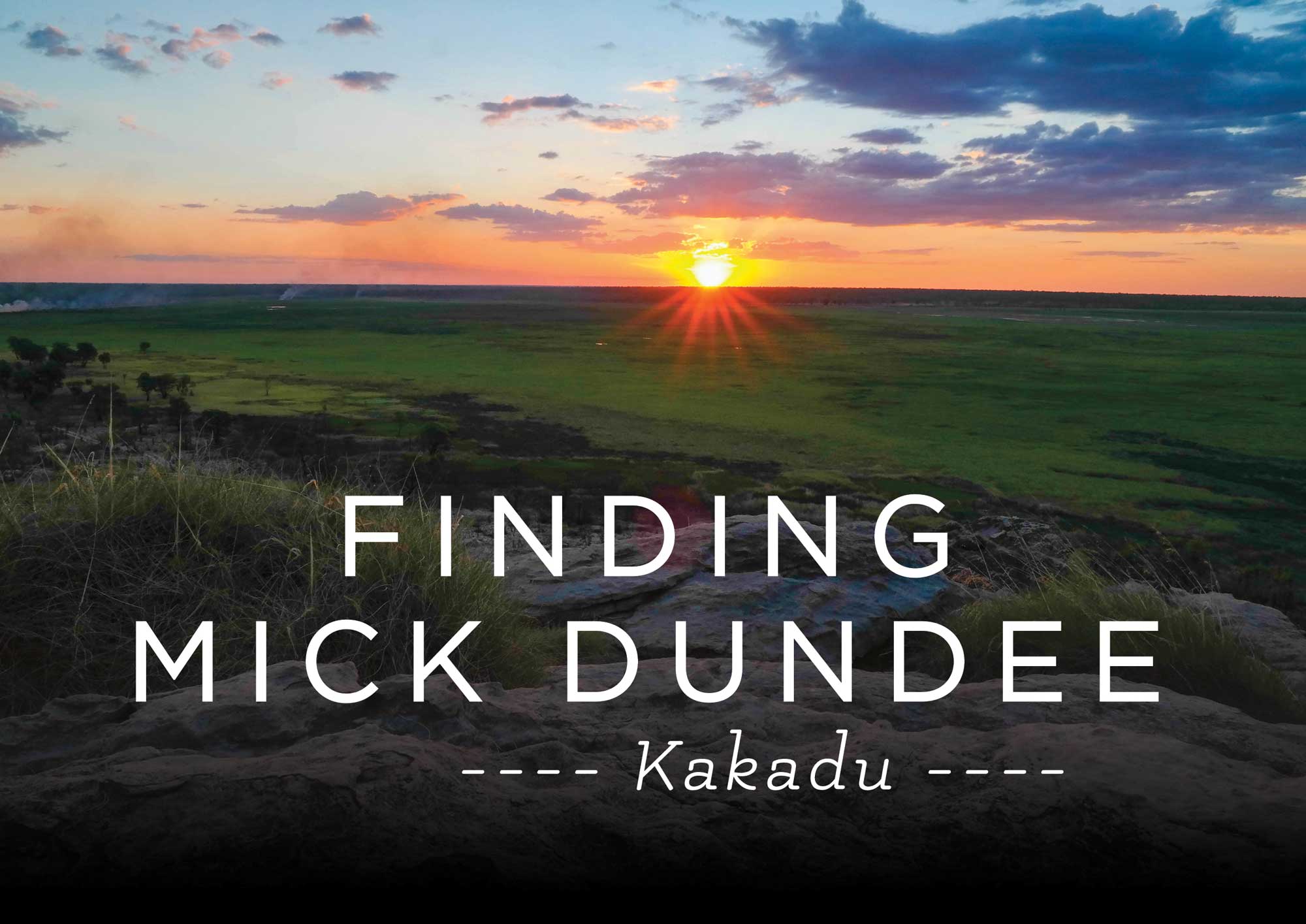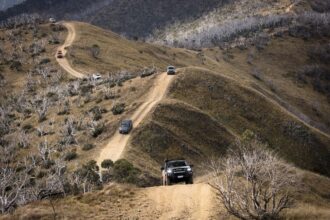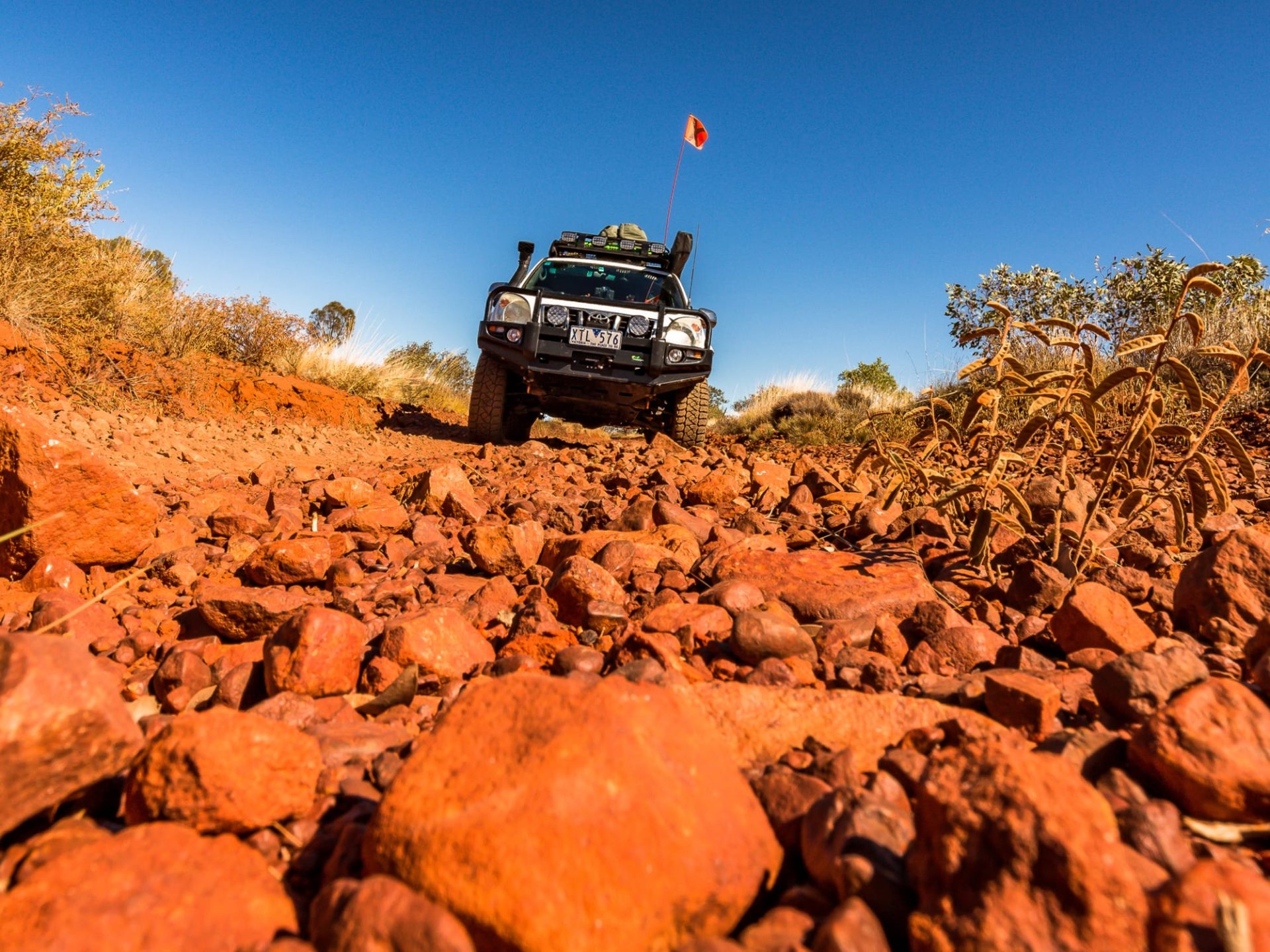A National Park half the size of Switzerland, and the backdrop to one of the most iconic Australian films – Kakadu screams out to be explored.
The World Heritage listed Kakadu National Park is Australia’s largest National Park with an area of almost 20,000 square kilometres. It makes sense then that there would be some exploring to do in an area half the size of Switzerland. While there is a bitumen highway through the Park that makes it accessible to every backpacker van and hire car hatchback, the best and more remote parts of Kakadu require a four-wheel drive for access.
Black soil and beach camping
Entering the Park from the west, it wasn’t long until we turned off the tar and aired down the tyres. The track out to Pococks Beach and West Alligator Head (Waldak Irmbal) is very corrugated and includes sections of bulldust and soft sand for the first 60km or so. After that you pop out onto a treeless swamp with black soil that looks so menacing that a bucket of water would see you bogged for days. OK maybe it’s not that serious… but the floodplain section is black soil and a decent amount of rain would likely result in an extended stay.
Once you arrive at the old camp, where you will find remains of some ancient sheds and machinery, you can choose between the three available camps. Pococks Beach camp is the biggest and includes drop toilets and cold showers (if there’s any water in the tanks). Alternatively, head east along the headland through monsoon rainforest and you will find Jungle Camp. Carry on further and you will arrive at the pick of the camps: Middle Beach. There’s no facilities at all here, but the views from camp across the beach only metres away are stunning and if you time your trip right you might even see sea turtles nesting here (October to December). The camp is actually fenced to prevent vehicular access to the nesting areas, but take a walk and the evidence of nests is obvious.
The fishing off Middle Beach is meant to be good, too. Apparently the fish missed the memo when we visited. Not a single bite. We did pass a couple of boats leaving as we arrived… so maybe they cleaned up and left nothing for the rest of us (that’s the story I’m sticking to, anyway).
Flying high
Back onto the bitumen and across to the north-east side of the Park, towards Arnhem Land, we set up camp at Merl Campground. This camp includes an amenities block and it seemed a bit luxurious for this trip – but there was a very good reason for camping just off the sealed road. You see, this is the closest campground to the famous Cahills Crossing. If you want to view crocodiles in the wild from the shore, then this place (at high tide) is your best bet. In fact you might even be lucky enough to see the crocs catching mullet and barramundi as they cross the causeway.
Just down the road from Cahills Crossing is a spot called Ubirr. Arriving shortly before sunset you will likely be confronted by masses of people – so try to get in early and grab a spot facing west. You will want to allow time for not only the short walk to the lookout but also a chance to check out some of the Aboriginal art in the area. This spot is one of the best places I’ve ever seen to watch the sunset. The lush green plains stretch out to the coastal woodlands and there’s just a special feel. Adding to the magic for us was a small fire burning on a distant plain, so typical for this part of Australia. If you think Ubirr seems familiar and you’re a Crocodile Dundee fan, it might be because this place was the setting for the final scenes of the second movie.
About 40km from Cahills Crossing lies Jabiru, which is basically a resort town that also provides basic services for the residents (like a supermarket and a bank). Not far out of town lies Jabiru Airport and the start of one of the best experiences I’ve ever had while touring this country. Kakadu Air runs scenic helicopter flights over Kakadu – and while the roads do give you access to some of the best features, you can’t grasp the size of the place any better way than from the air. Flying over wetlands we didn’t even know existed and through gorges that we simply would not have otherwise seen was just exhilarating.
A park of two halves
The southern half of Kakadu is an entirely different beast to the north. Gone are the tidal rivers and floodplains; the south is escarpment and waterfall country. With the escarpments comes caves and with caves comes Aboriginal art. One of the best examples of this is a circuit walk around Nourlangie Rock and Anbangbang Gallery. There’s a plaque here depicting the story of the artwork. Take the time to read it as it really gives a whole different perspective to the area and the art.
The ‘real’ do-not-miss experience in this area of Kakadu must be a visit to Yellow Water. You can jump on a cruise boat from here and the wildlife you can observe around this permanent waterway has to be seen to be believed. Obviously, there are crocodiles… but these crocs are quite used to the tour boats and often you can get really close. The birdlife is amazing, from sea eagles to jabirus; we even saw brolgas. There’s even a resident brumby population. Although brumbies are an introduced species, there are only 11 – so the powers that be have deemed them not to be an issue (yet). Seems crazy to me that they know there are only 11, yet they won’t take the opportunity to move them before they breed and become a problem. Bureaucracy at its finest, I guess.
Unfortunately for us there was a huge downpour about a week before we arrived at Kakadu, which meant that the two biggest waterfalls in the park (Twin Falls and Jim Jim Falls) were inaccessible. The silver lining was that smaller waterfalls further south were running again. The pick of these is without a doubt Gunlom (pronounced Goon-lom) Falls. There is a walk to the top where you can swim in one of several rock pools that are virtually guaranteed croc-free. The much larger pool at the bottom of the falls is also stunning… and although swimming in it is not recommended, plenty of people chance it. Once again if this place seems familiar, you might remember it better as Echo Lake from Crocodile Dundee.
There is a campground at Gunlom but down the road there’s a better option for the well prepared four-wheel driver. If you apply ahead of time you can obtain a permit to camp at Koolpin Gorge (Jarranbarnmi). Behind a locked gate and down a sometimes-tricky four-wheel drive track that includes a couple of river crossings there’s a little campground right next to the stunning Koolpin Gorge. You can walk up to the higher pools where swimming is permitted (but as usual in the Top End not recommended) and you can walk along the banks of the lower pools where entry to the water is strictly a ‘no-no’. During our walk we could see the slides from the crocs in the sandy bank. We also discovered a bower bird in this area… which was a first for me and very cool to see up close.
On the way out of Koolpin and Kakadu we even had the joy or running into a few water buffalo. What a way that was to end our trip. I can confirm that the Crocodile Dundee trick to get the buffalo to lay down on the road does not work. Do not try that one at home. Or in Kakadu.
Do, however, make an effort to visit the stunning Kakadu National Park.









